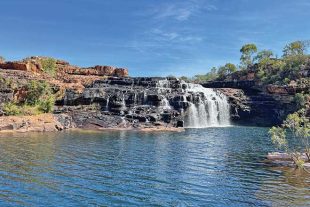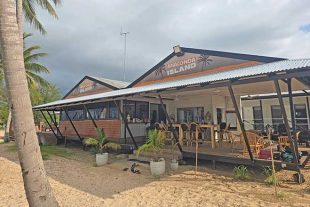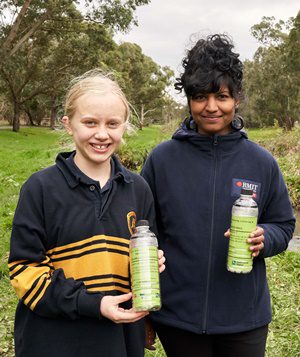
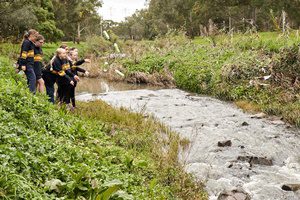
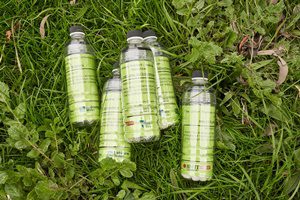 IN a Victorian-first citizen science project, GPS-tracked bottles will be released in suburban waterways around Melbourne to reveal precisely how litter makes its way from our streets to our beaches.
IN a Victorian-first citizen science project, GPS-tracked bottles will be released in suburban waterways around Melbourne to reveal precisely how litter makes its way from our streets to our beaches.
A staggering 95 percent of the litter on Port Phillip Bay beaches comes from suburban streets, with about 350,000 cigarette butts washing into the bay every year. The Litter Trackers project will see RMIT University scientists working with schools and community groups to deploy 100 GPS-tracked bottles in 20 locations across Melbourne’s catchments.
Online interactive maps allow anyone to follow the bottles and discover just how rapidly litter travels through our waterways. Project leader Dr Kavitha Chinathamby said Litter Trackers gives all of Melbourne a chance to see the true environmental scale of our litter problem and shows how we can all be part of the solution.
“From cigarette butts to plastic bottles, the litter we drop on our streets finds its way into our waterways and washes up on our beaches,” Chinathamby said. “Litter reduces water quality, harms fish and animals, and ruins our city’s natural beauty. To build a more sustainable and liveable future for Melbourne, we need healthy waterways – and that means we need to tackle our litter problem at the source. Through Litter Trackers, everyone can get on board with driving this change and create a cleaner, healthier future for our waterways and bays.”
Litter Trackers is a collaborative project between RMIT and Melbourne Water, supported by the Victorian Government.
The project is the first of its kind for Victoria, and only the second time that litter has been GPS-tracked in Australian waterways. Melbourne Water’s Litter and Waterwatch Coordinator Naomi Dart says Litter Trackers is a terrific learning tool for students and the wider community.
“People often don’t realise that the rubbish they drop in their suburban street ends up right here in our rivers and streams carried by stormwater through our waterways. The Litter Tracker technology shows us this in real time,” Dart said. “Melbourne Water spends millions of dollars a year removing litter from our waterways. This project is an important reminder for everyone to bin their litter.”
As part of the project, classroom materials and teacher resources will be developed to educate school children about littering and its environmental impacts. The Litter Trackers initiative is led by RMIT’s Aquatic Environmental Stress research group (AQUEST). AQUEST works with schools, community groups, government and industry partners to support healthy waterways across Melbourne, through the development of innovative approaches to preventing and cleaning up pollution from our rivers, creeks and bays.
Fast Facts
- 95 percent of the litter on Port Phillip Bay beaches comes from suburban streets, travelling through stormwater drains to our creeks and rivers, and eventually into the bay.
- About 350,000 cigarette butts enter Port Phillip Bay every year and cigarette butts are the most common type of litter collected during clean-ups
- Plastic litter (including discarded fishing lines) entangles birds, mammals, reptiles and fish causing injury or death by the thousands
- Plastic litter also breaks down into microplastics and more than 600 million tiny pieces of microplastic reach the Bay every year
- Toxic chemicals accumulated in discarded cigarette filters or on microplastics can leach out and pollute the surrounding soil and water and can be swallowed by animals, causing health effects.
Follow the Project
Head to www.rmit.edu.au/littertrackers and follow the project to discover:
- why litter is an important environmental issue
- how it travels from your hand or pocket to our waterways and beaches
- if extreme weather conditions affect the litter journey
- how litter can remain trapped in our creeks, rivers, estuarine and marine environments impacting waterway health and aquatic wildlife
- the importance of local waterways and the connections between catchment activities and waterway health
 Bush ‘n Beach Fishing Magazine Location reports & tips for fishing, boating, camping, kayaking, 4WDing in Queensland and Northern NSW
Bush ‘n Beach Fishing Magazine Location reports & tips for fishing, boating, camping, kayaking, 4WDing in Queensland and Northern NSW






